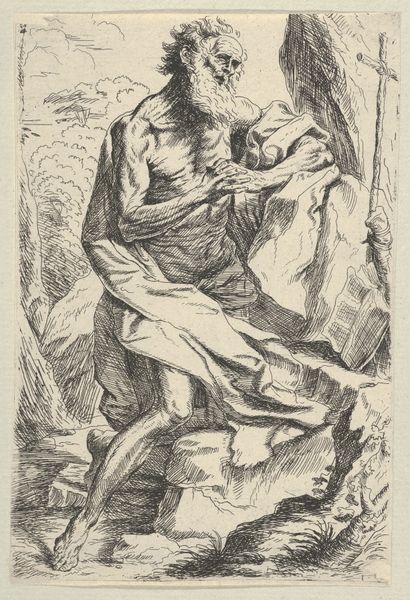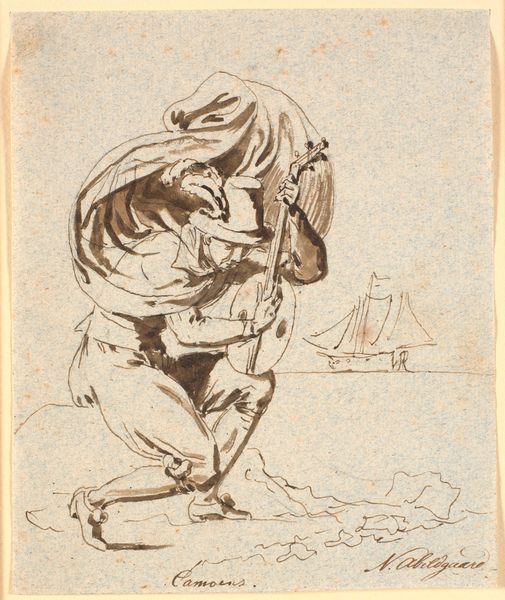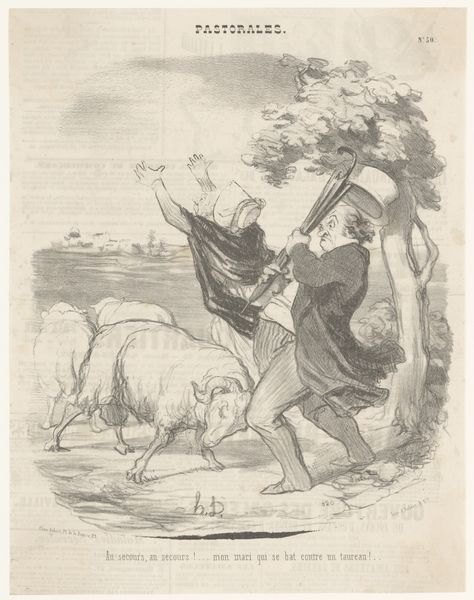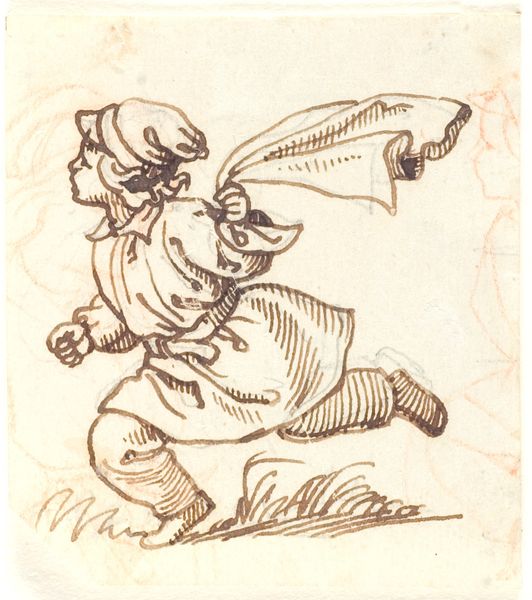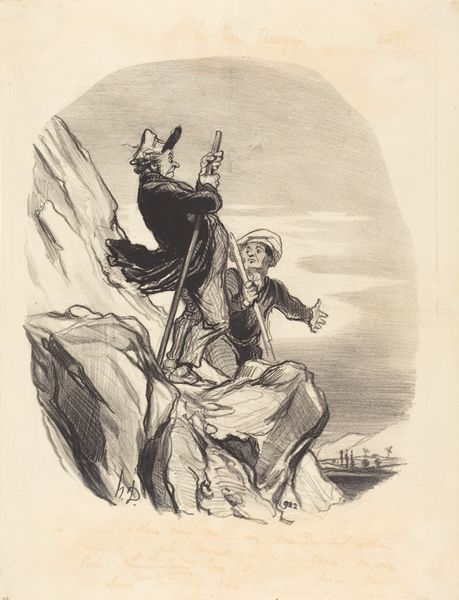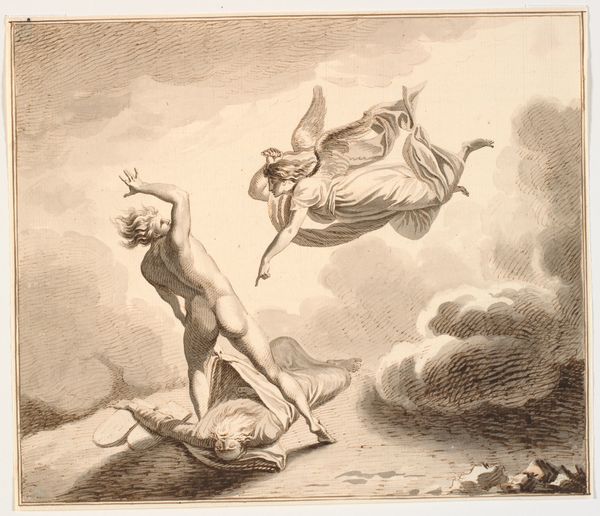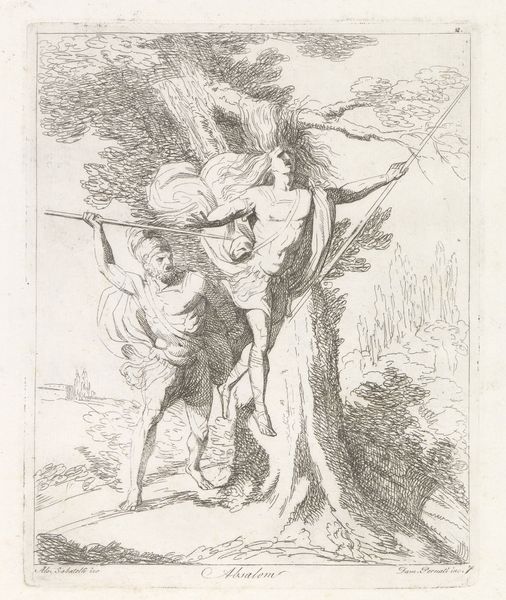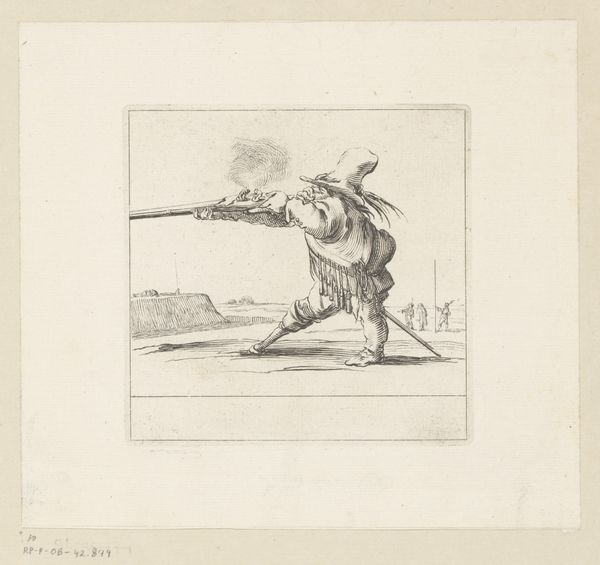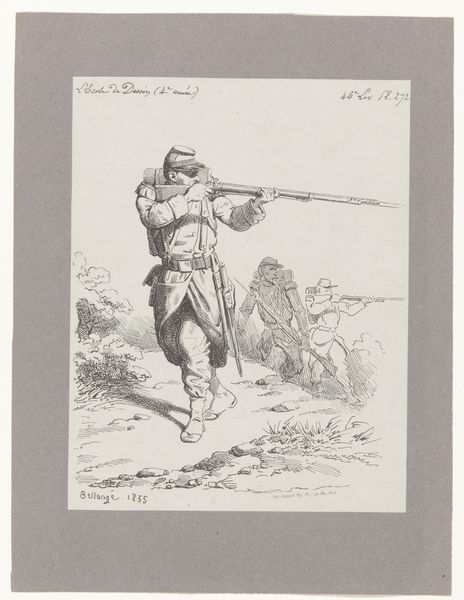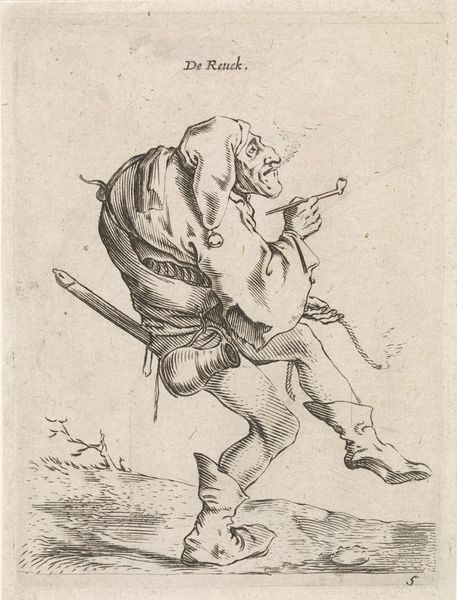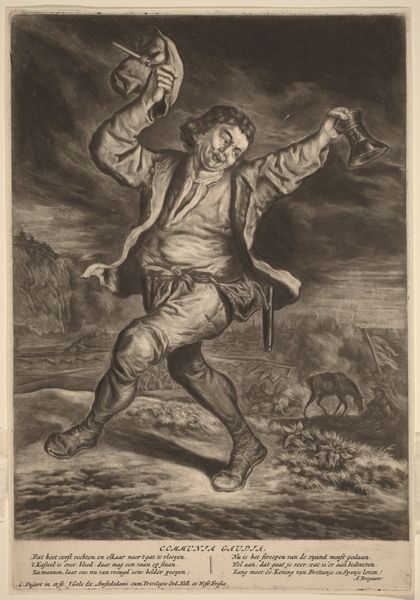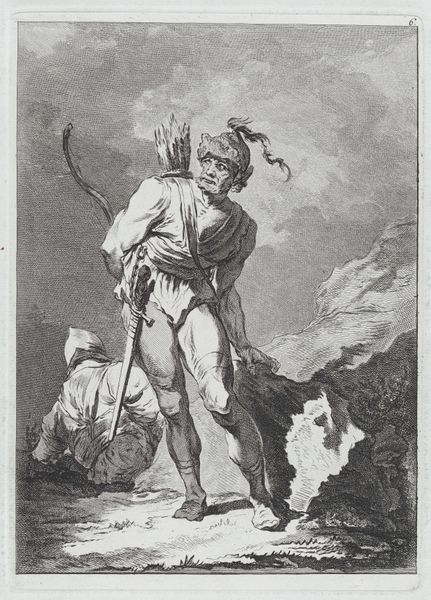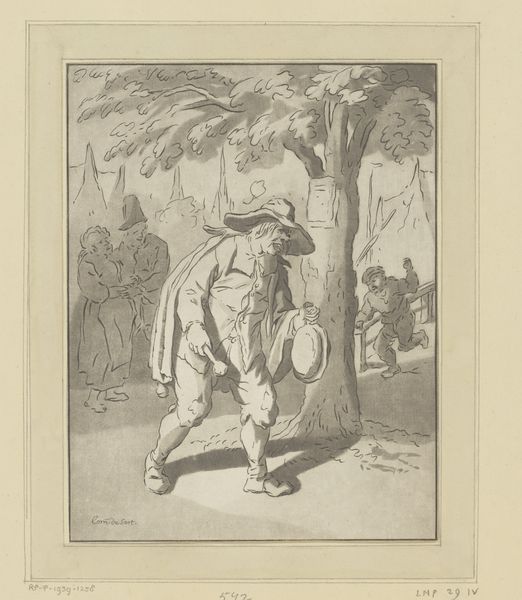
Chinese Dancer, from Livre de Chinois (Book of Chinoiserie) 1720 - 1770
0:00
0:00
drawing, print, etching
#
portrait
#
drawing
# print
#
etching
#
figuration
#
orientalism
#
france
#
genre-painting
#
rococo
Dimensions: Sheet: 11 7/16 x 9 11/16 in. (29 x 24.6 cm)
Copyright: Public Domain
Curator: This is "Chinese Dancer," a print by François Boucher, part of his Livre de Chinois, or Book of Chinoiserie, dating from about 1720 to 1770. Editor: Well, my first impression is that this dancer, suspended in mid-air, looks incredibly precarious, almost as if he's about to topple right off that little hill. It’s theatrical, light, and somehow very… French? Curator: Precisely! Boucher never visited China, of course. This is his interpretation of Chinese culture, a playful fantasy known as Chinoiserie that was wildly popular in Europe at the time. The etching medium allowed for intricate detail but also helped create this impression of effortless grace, wouldn't you agree? Editor: Effortless grace, yes, but also a certain… distance. It feels like a costume party. Like he's winking at us from behind the silks, which might hint at something broader about that time, yes? Curator: Definitely. Chinoiserie offered a form of escapism, a retreat into an idealized "exotic" East, conveniently overlooking the complex realities of Chinese society. The architecture in the background, the stylized flora – all filtered through a European lens, divorced from their original cultural context. It was, in some ways, an appropriation, however fanciful and entertaining. Editor: Absolutely. And the title itself, “Chinese Dancer," so generic, almost reducing a whole culture to a single, palatable stereotype. But the execution is so lovely—that fine line work gives it a real energy and whimsical touch, it’s so Rococo! So it kind of begs the question, can we appreciate it without forgetting its less savory cultural implications? Curator: That's always the challenge, isn't it? To recognize the artistry while critically examining the cultural and historical forces that shaped it. Editor: Food for thought, certainly. Art doesn't exist in a vacuum, and it's important to unpack those complicated histories behind the pretty pictures, or pretty prints in this case. It reminds me we should be critical with these lenses as they create history. Curator: Indeed. I see Boucher’s dancer now as a point of departure to delve into France’s complex entanglement with China at that time.
Comments
No comments
Be the first to comment and join the conversation on the ultimate creative platform.

